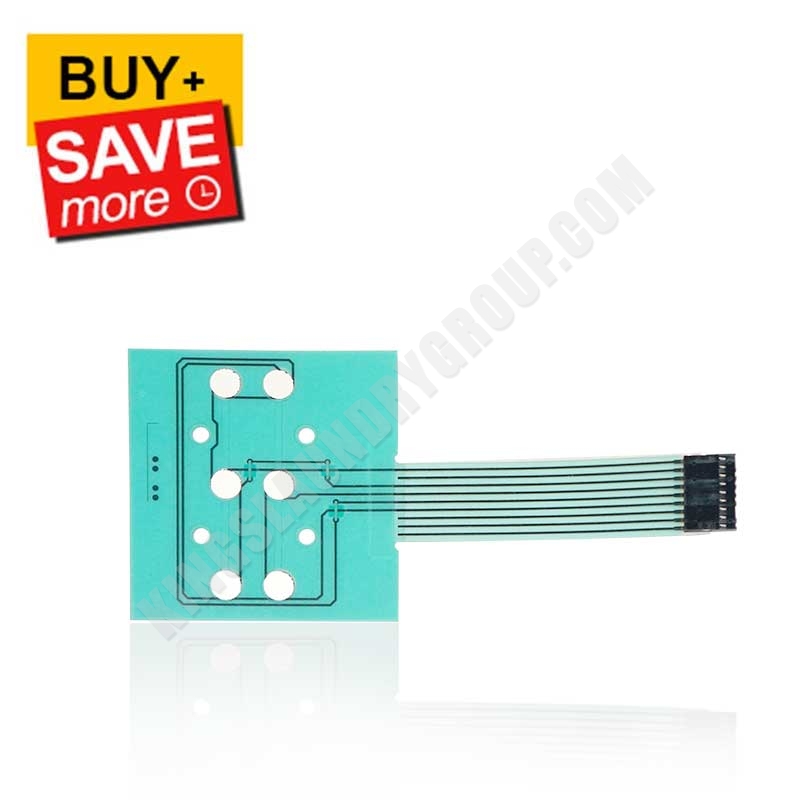Exactly How a Membrane Switch Boosts User Experience and Device Performance
Exactly How a Membrane Switch Boosts User Experience and Device Performance
Blog Article
Recognizing the Capability of Membrane Changes for Interface Instruments
The capability of membrane layer changes stands for a significant improvement in user interface style, incorporating efficiency with visual flexibility. As industries significantly focus on individual experience, comprehending the nuances of membrane layer button modern technology becomes necessary.
What Are Membrane Switches?
Membrane layer switches are innovative interface tools that help with individual interaction with electronic devices. These flexible parts contain multiple layers, including a graphic overlay, spacer, and a printed circuit layer. The layout permits for a smooth integration right into various digital devices, enhancing both the aesthetic and practical facets of interface.
Membrane switches are frequently used in a large range of applications, from house home appliances to industrial machinery and clinical tools. Their building and construction generally includes a slim account, making them an excellent selection for portable layouts. The responsive feedback offered by these buttons can be engineered to meet specific user preferences, ensuring efficient interaction in between the individual and the tool.
Sturdiness is an additional substantial benefit of membrane switches, as they are immune to dust, wetness, and chemicals, which enhances their life-span in demanding atmospheres. In addition, these switches can be personalized in regards to form, size, and visuals style, enabling branding and user-specific attributes. Overall, membrane layer switches over stand for a practical solution for boosting user experience in digital tools, incorporating capability with aesthetic charm in an effective manner.
Just How Membrane Layer Switches Over Job
Operating on a simple principle, membrane layer switches make use of a layered building and construction to register user input successfully. Each switch consists of several layers, including a published circuit layer, a spacer layer, and a leading visuals layer, which are designed to collaborate perfectly. When a user presses the top layer, it presses the spacer layer, bringing the conductive elements of the circuit layer right into contact with each various other.
This get in touch with produces a closed circuit, signaling the tool to carry out a particular function. The style permits different configurations, including responsive feedback, which can boost the user experience by providing a physical feeling upon activation. The products used in membrane layer buttons usually include flexible substrates, such as polyester or polycarbonate, which guarantee durability and durability versus wear and tear.

Trick Benefits of Membrane Layer Buttons

Another substantial benefit is their density. Membrane layer buttons are slim and lightweight, which makes it possible for makers to conserve area in their tools without compromising performance. This attribute is especially valuable in applications where weight and quantity are vital factors to consider.
Furthermore, membrane switches are immune to dust, dampness, and chemicals, boosting their resilience. This durability expands their lifespan and lowers the need for regular substitutes, leading to price financial savings over time.
Additionally, the responsive feedback offered go to these guys by membrane layer buttons can be enhanced to enhance individual interaction. They can include attributes such as raised switches or audible clicks, boosting use and individual experience.
Applications Across Industries
Customer interface gadgets using membrane layer switches are prevalent in a large selection of markets, showcasing their versatility and performance. Membrane Switch. In the medical market, membrane layer switches are integral to devices such as analysis devices and client monitoring systems, where their resilience and simplicity of cleaning are vital for keeping hygiene requirements. In the automotive market, these switches are used in control panel controls and infomercial systems, providing a sleek and modern-day interface for users.
Moreover, the customer electronic devices industry advantages from membrane layer switches in home appliances and handheld tools, where small layout and user-friendly interfaces improve user experience. Industrial applications likewise leverage membrane layer switches over for control panels in machinery and automation systems, highlighting their robustness and resistance to severe environments.
In the aerospace and defense markets, membrane layer buttons are utilized in cockpit controls and devices, where reliability and performance under severe problems are critical. Furthermore, the pc gaming sector significantly incorporates membrane switches in controllers and game makers, adding to an interesting individual experience. Overall, the convenience of membrane layer switches allows their extensive use throughout various fields, emphasizing their value in modern-day user interface style.
Future Patterns in Membrane Layer Change Technology

Furthermore, using sophisticated products, such as polycarbonate and polyester movies, is anticipated to climb, supplying enhanced toughness and resistance to check out this site ecological stress factors. These materials add to the overall long life of membrane buttons, making them ideal for harsher industrial applications.
Furthermore, the unification of smart innovation, including IoT connectivity, will certainly make it possible for membrane buttons to communicate with various other tools and systems, assisting in a more interactive customer experience. This pattern aligns with the growing demand for wise devices across numerous markets, from health care to consumer electronic devices.
Last but not least, customization options are anticipated to increase, permitting makers to produce bespoke remedies tailored to details user needs and choices. These growths will certainly place membrane layer buttons as necessary components in the development of user interface innovation.
Verdict
In conclusion, membrane switches represent a pivotal improvement in customer interface technology, using a reliable and functional option for diverse digital applications. As advancements in material scientific research and touch noticing modern technologies proceed, the performance and applicability of membrane layer buttons are anticipated to expand, strengthening their significance in modern digital tools.
Report this page